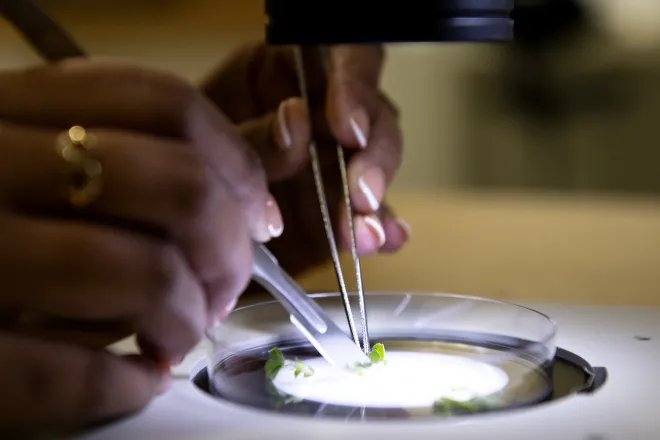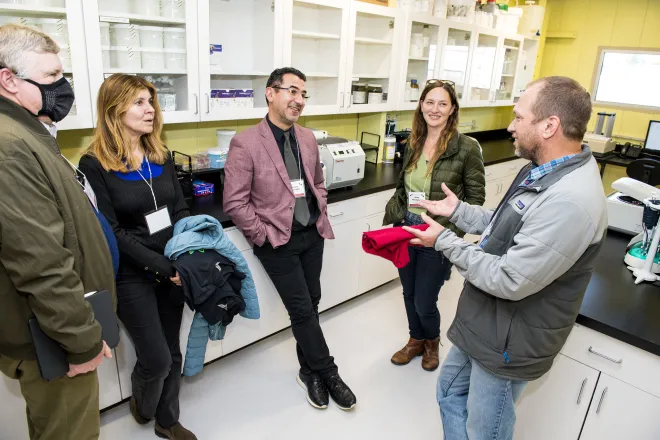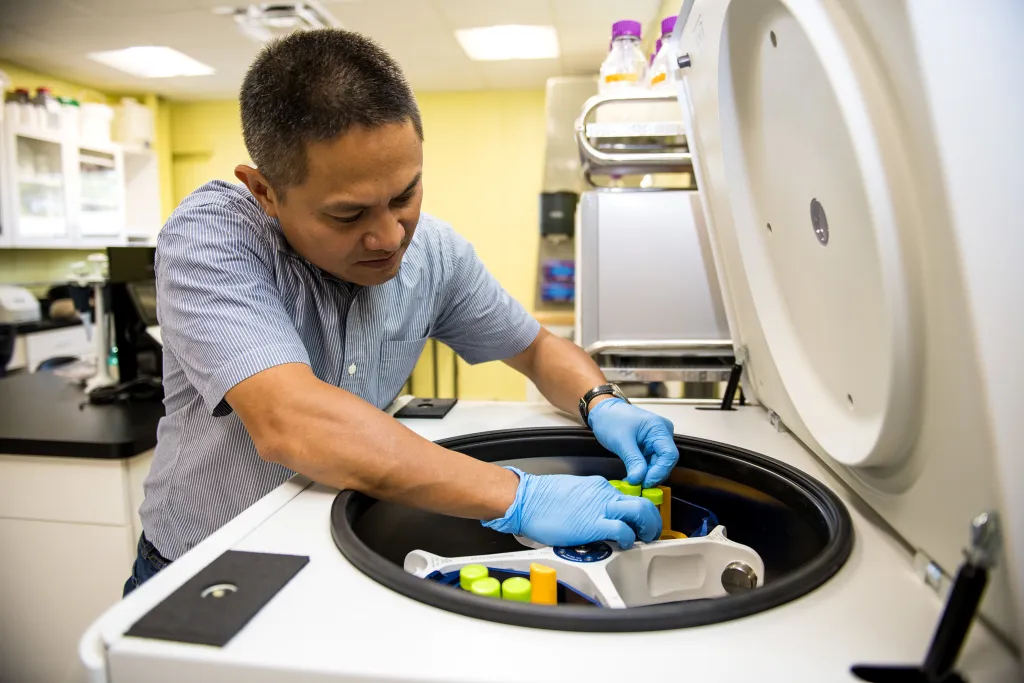The Arkansas Clean Plant Center for Berries at the Arkansas Agricultural Experiment Station is moving into a renovated laboratory, expanding its capability to assure that nurseries and growers have plants free of harmful pathogens.
The following story was originally published by the University of Arkansas and is reprinted here with permission.
The public recently toured the new center during an open house Oct. 26. The center is located in the Crawley Warren Building at the Milo J. Shult Agricultural Research and Extension Center.
"The Clean Plant Center helps make certain that plant nursery operators and berry growers in Arkansas and across the country can be assured their plants are free of disease," said Jean-François Meullenet, senior vice president of agriculture-research for the University of Arkansas System Division of Agriculture and director of the Arkansas Agricultural Experiment Station.
"Having this regional center in Arkansas speaks volumes about the quality of the research and outreach of our scientists, the respect they have among their peers nationally and the confidence that our agricultural communities place in them," Meullenet said. "This expansion will provide the highest level of service for diagnosis and elimination of berry plant diseases."

Service Center
Director Ioannis Tzanetakis said the center provides testing and clean-up necessary for certification of nurseries providing berry planting stock and for export. These are essential services for one of the country's leading agricultural sectors.
The United States ranks second worldwide in berry fruit production, according to FAOSTAT, a collection of databases covering international agricultural statistics for the Food and Agriculture Organization of the United Nations. According to the U.S. Department of Agriculture's National Agricultural Statistics Service, berry production provided about $5 billion to the U.S. economy in 2021.
"We're here to eliminate systemic pathogens of concern for berry crop plants," Tzanetakis said.
Tzanetakis is a professor of plant virology for the Arkansas Agricultural Experiment Station, the research arm of the Division of Agriculture. The Arkansas Clean Plant Center for Berries is one of four regional centers in the National Clean Plant Network that are dedicated to berries. The other three are at the USDA Agricultural Research Service Horticultural Crops Disease and Pest Management Research Unit in Corvallis, the University of California at Davis and North Carolina State University, Raleigh.
The NCPN was created to protect U.S. specialty crops, including berries, from the spread of economically harmful plant diseases. It is an association of scientists, educators, state and federal regulators, nurseries and growers that work together to make sure plant propagation material is clean and available.
The network is funded by the USDA under three branches — the Animal and Plant Health Inspection Service, the Agricultural Research Service and the National Institute of Food and Agriculture.
Tzanetakis has been director of the Arkansas Clean Plant Center for Berries since it was begun in 2011. At that time, he offered services from his research lab, where he also conducts research on plant viruses, including how they are transmitted and how they interact with other pathogens and plants. He develops diagnostic tools using genetic technologies that can detect known viruses and discover previously unknown viruses.
The expanded lab will double the center's testing and cleaning capacity, Tzanetakis said. "It gives us room to expand our clientele," he said.

Testing and Cleaning
"Viruses can have a tremendous impact on the health and lifespan of plants in the field," said Margaret Worthington, associate professor of horticulture and fruit breeder for the Arkansas Agricultural Experiment Station. "Viral diseases can cause lower plant vigor, reduced yields and poor fruit quality. These can be very costly for fruit growers."
Worthington said all new blackberry releases go through the Arkansas Clean Plant Center for Berries. "It's so important to make sure we put healthy plants in the field," she said.
Tzanetakis said the major diseases of concern for berry growers include strawberry decline, blackberry yellow vein and blueberry scorch. Berry crops also face effects from two new viruses, yet to be named, that were discovered by Tzanetakis' research team.
New equipment in the Arkansas Clean Plant Center for Berries will permit in-house high-throughput sequencing and other advanced procedures, Tzanetakis said. Those tests once required the center to send samples to outside services for analysis. The ability to perform diagnostics in-house will speed up service and provide rapid turnaround for testing results.
Tzanetakis said the lab also cleans plant material for public breeding programs. The pathogen elimination service is funded by USDA.
"We test it and, if the breeding material is infected, clean it to provide material free of pathogens of concern to breeders and propagators."
When a viral or bacterial pathogen is detected in plants, Tzanetakis said the lab team uses heat or chemical treatments that slow the progress of infection, preventing it from reaching the plants' meristematic tissue, from which new plant tissue grows. That tissue can then be removed and cultured to grow new plants free of those pathogens.
Top image: Research scientist Dan Villamor sets up samples in the centrifuge in the Arkansas Clean Plant Center for Berries. The center moved into new and updated facilities in October 2022. Credit: Fred Miller/U of A System Division of Agriculture.

